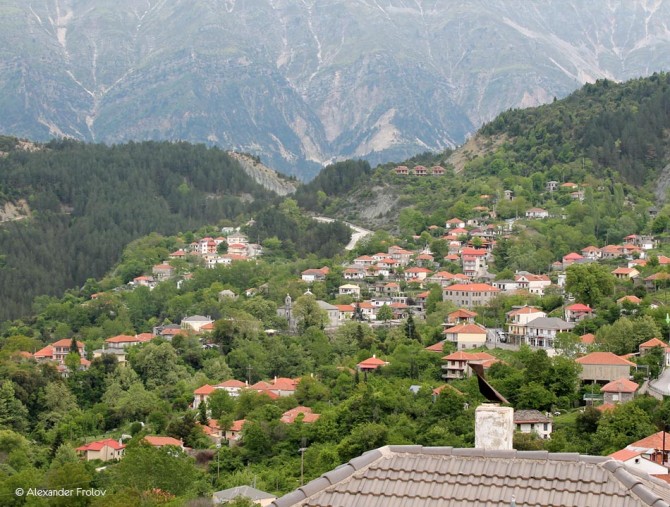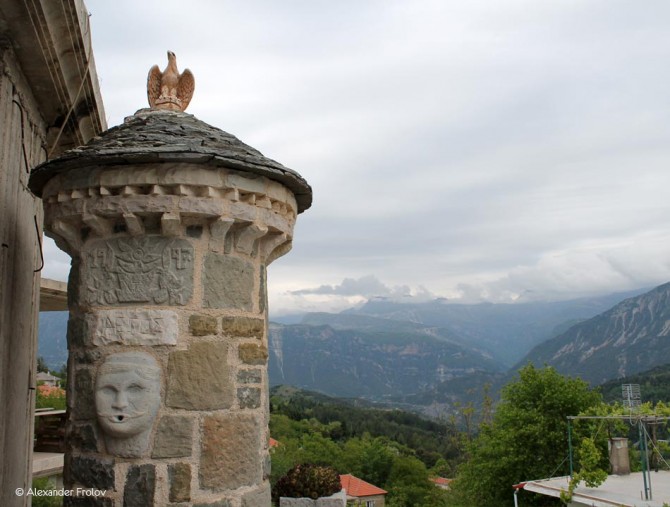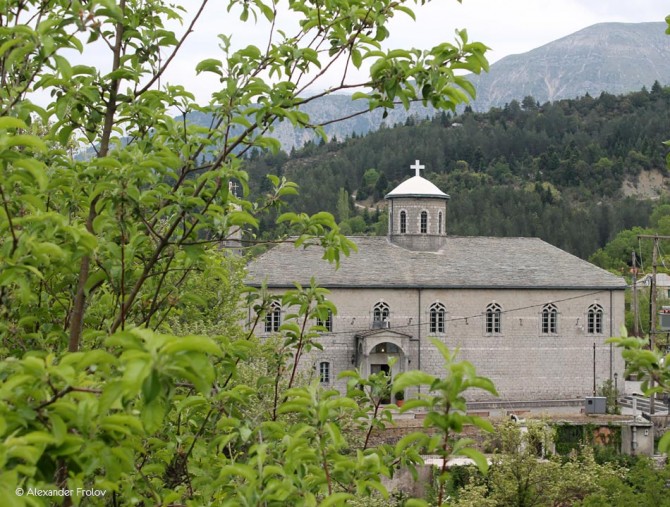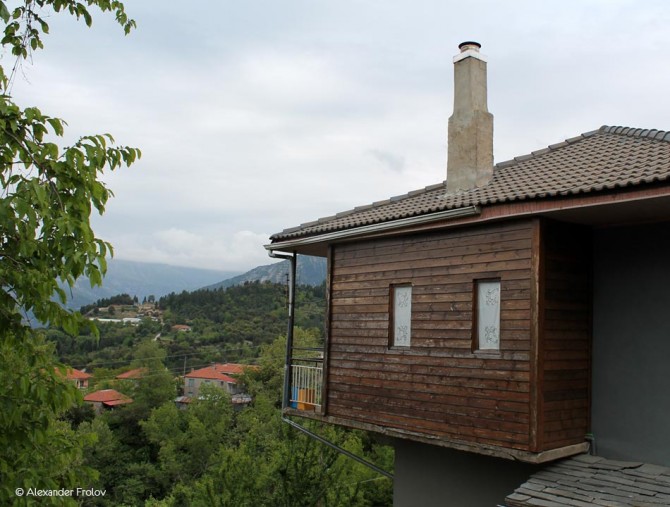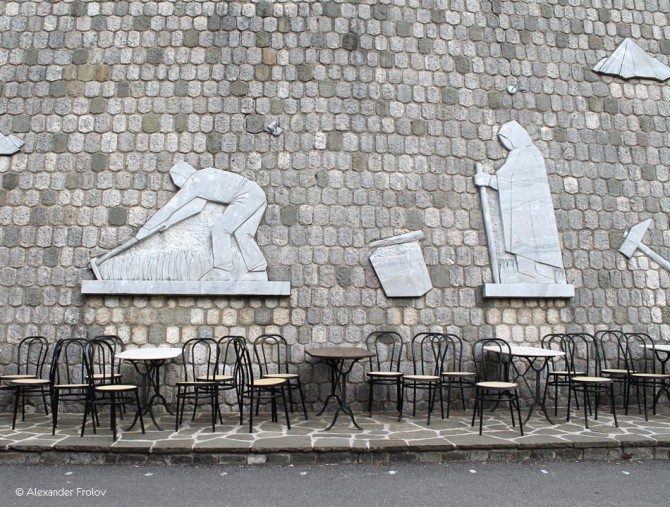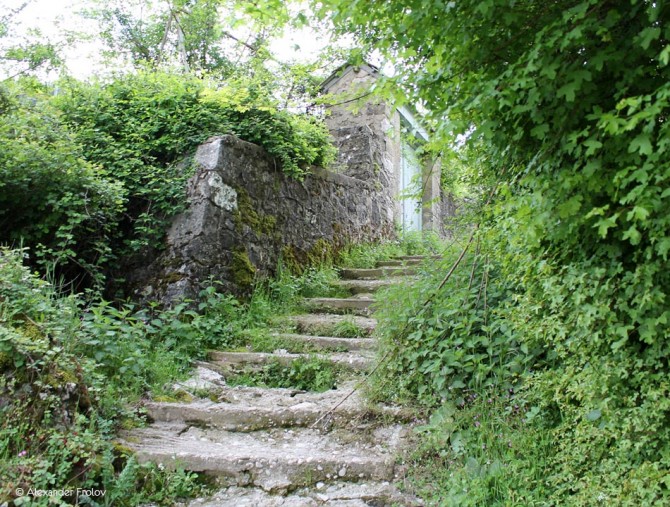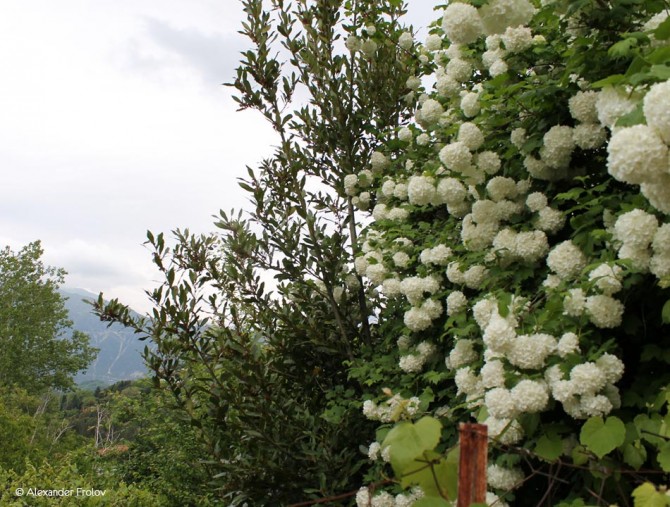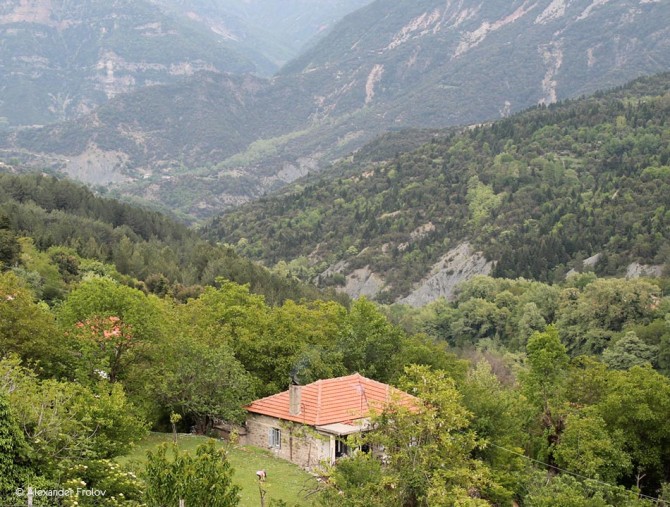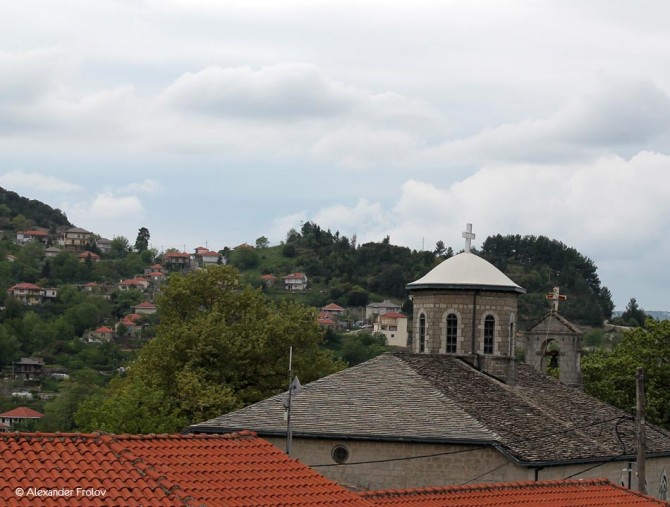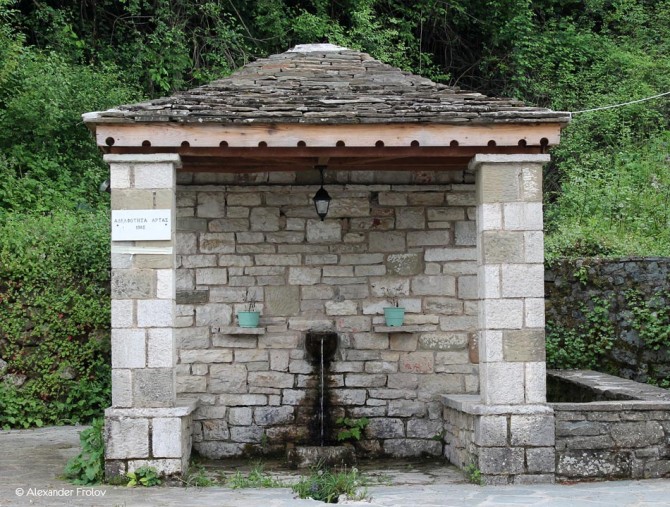Прамада
Деревня Прамада находится в горной области Эпира – Джумерке, в десяти километрах от деревни Агнада. Это не только самая большая деревня этой местности, но и населенный пункт, расположенный у подножия самой большой горы Джумерки под названием Страггула. Прамада лежит на высоте 840 метров над уровнем моря и окружена нетронутой природой. Причин посетить это место немало. Практически из любой точки тут открывается захватывающий вид на горы и дома с черепичными крышами и это не говоря о достопримечательностях и пещере.
История Прамады начинается в середине XV века, когда в Джумерке появились первые животноводы построили тут свои дома. Вскоре к ним присоединились тюремные беглецы из Эпира, которые хотели начать в труднодоступных районах новую жизнь. В годы войны за независимость, начиная с 1821 года, село стало резиденцией партизан. Свой нынешний вид Прамада стала принимать сразу после обретения Грецией независимости. Теперь это с одной стороны довольно традиционное село, с другой – тут есть школы, больница, гостиницы, библиотека, магазины и бары. И, что довольно редко для этой области, тут прекрасная инфраструктура – дороги отличного качества, вы везде найдете паркинг.
Всего в четырех километрах отсюда находится пещера Анемотира естественного происхождения. Она возвышается на высоте 900 метров и разделена на три уровня. Самый высокий уровень к сожалению посетить на данный момент нельзя из-за произошедшего несколько лет назад обрушения. На среднем и единственно доступном уровне можно увидеть сталактиты и сталагмиты, а также водопад. Самый нижний уровень пещеры – это русло подземной реки, которая течет через Анемотиру. Добраться можно по трассе Янина-Сираку 13, Ктистадес. Часы работы: 10:00-17:00, по выходным: 10:00-15:00. Информация по телефону: +30 26590 62300/313
На главной площади Прамады главная достопримечательность – исторический фонтан под названием Арапис. Он был построен в 1887 году рядом с самым старым местным платаном, который в своем роде считается символом села. О названии фонтана существует три версии. Согласно одной - так звали турецкого сборщика податей, по другой – это было имя архитектора, строившего первые дома. По третей версии – фонтан был назван в честь животновода, изображенного на нем. Так или иначе, фонтан красивый, а вода в нем кристально чистая.
На той же площади вы найдете внушительную трехнефную базилику, которая выглядит довольно необычно. Тут и арки над окнами, и классические колонныи, и симпатичные элементы барокко. Это храм Святой Прасковьи был построен в 1890 году на деньги жителей села.
Одноименный монастырь в нескольких километрах к востоку отсюда, был построен в 1878 году монахом Дионисием Нутсосом и хранит иконы 1839 года. В период 1908-1912 годов во время партизанского движения здесь находился штаб местного атамана Иоаниса Путесиса. Но это не все. Согласно легенде, неподалеку от этого монастыря в XIII веке нашла убежище королева Теодора. Она была выгнана из дворца собственный мужем и вынужденно скиталась вместе с детьми. В дальнейшем она стала почитаться святой и по сей день считается покровительницей Арты.
В окрестных лесах вы найдете множество водопадов . В низине находится река Арахтос, которую также можно увидеть и в Арте. Впрочем здесь, неподалеку от Прамады, собираются любители сплавляться на байдарках и каноэ любители экстрима. Pramanta Refuge находится в 5,5 километрах. Добраться можно по рассе Прамада-Мелисурги. Подробная информация на сайте.
Как добраться до Прамады:
- на машине из Афин (419 км) по трассе E65, см как добраться до Арты
- на машине из Арты (66,7 км) по трассе Арта-Янина
- на машине из Янины (55,3 км) по трассам Янина-Арта и Агнада-Лазена
- на машине из Агнады (11,8 км) по трассе Янина-Сирака
- на машине из Мелисурги (5,7 км) по трассе Прамада- Мелисурги
- на автобусе из Афин до Арты или Янины, далее на местном автобусе до Прамады
Фото и текст: Александр Фролов
Pramanta
Built at an altitude of 840 meters, at the foot of Stroggoula -the most imposing peak of the mount Tzoumerka-, Pramanta is the largest village of the region. The nature of unique beauty that surrounds the place and the houses that keep intact their traditional character compose a lovely mountainous village which you will love instantly.
The story of Pramanta begins in the middle of the 15th century, when breeders moved in the area and built the first houses. Soon they were joined by fugitives (mainly from Epirus) who were seeking inaccessible places to make a fresh start. In the years of the Greek Independence War of 1821, the village became seat of the partisans and took part in the battles against the Turks. After the liberation, Pramanta gradually began to take its present form: A modern village with traditional character, public services, health center, schools, library, shops, restaurants, bars and tourist facilities.
If you look for reasons to visit Pramanta, we could give you plenty. The village itself is beautiful, with traditional houses with red tiled roofs, quaint narrow streets and many highlights. Among them, the historical fountain “Arapis” in the central square, built in 1887 next to a perennial plane tree, that is considered as the symbol of Pramanta. There are three theories about the origin of its name. According to one, Arapis was the name of a Turkish tax collector during the Ottoman Rule. According to another, Arapis was a master architect who inspired the residents to build their houses. The third theory claims that Arapis was a powerful livestock owner, whose figure has been carved on the stone of the fountain. Whichever theory is true, this fountain is beautiful and its water is crystal clear.
In the same square, you will also see a large three-aisled basilica, that will impress you with the westernized stone arches on the top of the windows, the classical capitals and the lovely baroque elements. It is dedicated to Saint Paraskevi and it was built in 1890, with the money and the personal work of the residents. It is needless to say that this church is the ornament of the village.
Talking about religious buildings, a few kilometers away, to the east, you can visit the monastery of Saint Paraskevi. It was founded probably in 1878, by the monk Dionysios Noutsos, and hosts beautiful religious icons dating back to 1839. In the period 1908-1912, the monastery was the seat of the notorious partisan chieftain Ioannis Poutesis. According to a legend, in the area around the monastery, the queen of Arta, Theodora, had found a shelter during the Byzantine period (13th century), because she was hurt by her husband’s infidelity. Later she became known as Saint Theodora.
Just 4 km from Pramanta, a not so known miracle of the nature is waiting for you: The cave Anemotrypa (Windhole). Perched at an altitude of 900 meters, the cave is divided in three levels. The highest one can not be visited as it had collapsed a few years ago, the middle one is a shaped tourist route, with stalactites and stalagmites, magical waterfalls and lovely ponds, while the lowest is the bed of an underground river that flows through the cave. Does it worth a visit? Absolutely! (Provinvical Road Ioannnina- Sirakou 13, Ktistades. Opening hours: 10:00-17:00. Holidays: 10:00-15:00. Info: +30 26590 62300/313).
The rich forests, the lovely waterfalls and the springs that embrace the village are wisely designed for hiking and enjoying the nature. For the more adventurous however, there is also the Pramanta Refuge, that is
especially design to offer unique experiences to the visitors, such as rafting on the rushing waters of the Arachthos river, cycling through the forest, climbing, mountaineering and hiking (Pramanta Refuge, 5,5 km from Pramanta, via Provincial Road Pramanta-Melissourgoi, http://www.katafigiopramanton.gr/).
After enjoying the nature, the extreme sports and the visits in and out the village, the traditional taverns of Pramanta will make sure that you will have enough energy for the next days, serving you unique local specialties, such as local meats grilled, pies and delicious desserts. Yummy!
How to get there: By car from Athens (distance 419 km) via E65, from Arta (distance 66,7 km) via Provincial Road Arta-Ioannina and Provincial Road Ioannnina-Siraka, from Ioannina (distance 55,3 km) via Provincial Road Arta-Ioannina and Provincial Road Agnanta-Lazena, from Agnanta (distance 11,8 km) via Provincial Road Ioannnina-Siraka, from Melissourgoi (distance 5,7 km) via Provincial Road Pramanta-Melissourgoi. By bus from Athens to Arta or Ioannina and from there by local bus to Pramanta.
Τext: Marilou Pantazi

